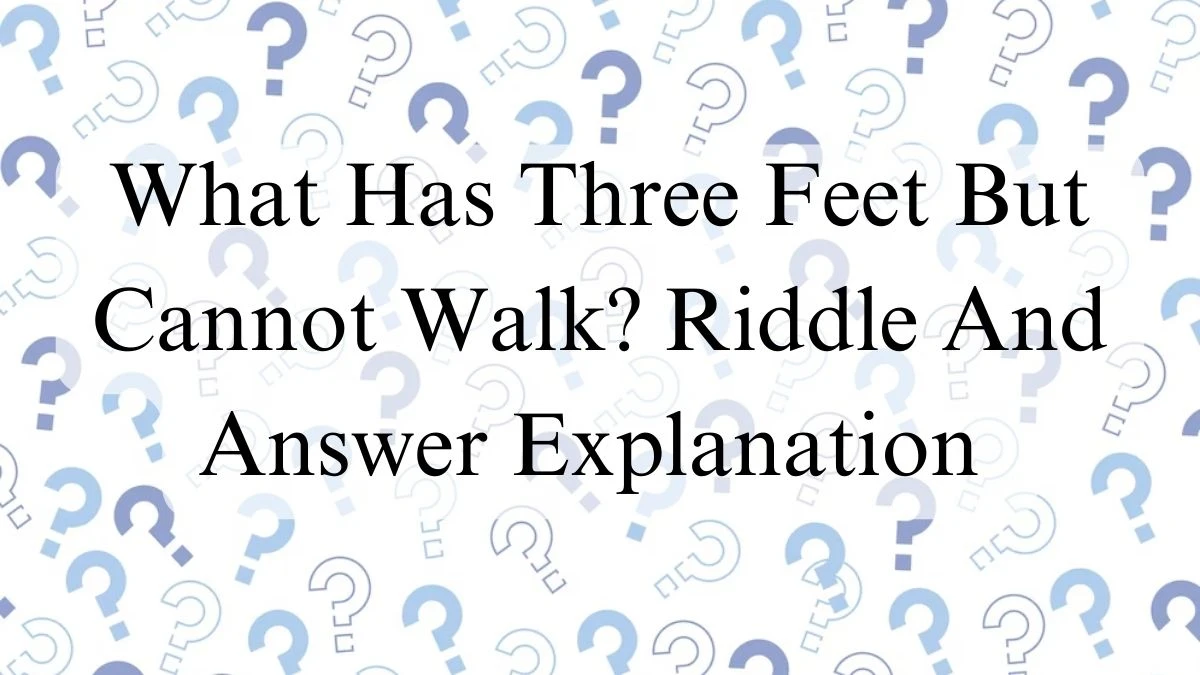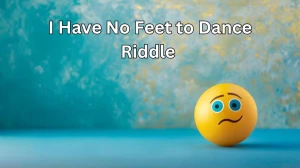What Has Three Feet But Cannot Walk? Riddle And Answer Explanation
by
Updated Jun 27, 2024

What Has Three Feet But Cannot Walk? Riddle And Answer Explanation
A riddle is a type of puzzle or question that uses tricky language to challenge your thinking. It's a fun way to use words and ideas to make people think in creative ways. Riddles often have a double meaning, making you think outside the box to find the answer. They can be about anything, from simple objects to more complex ideas.
Riddles have been around for a long time. People have enjoyed them for centuries because they are a great way to test your brain. When you hear a riddle like "What Has Three Feet But Cannot Walk?", you need to think carefully about what each word could mean. The answer is not always obvious, which makes solving riddles fun and satisfying.
Playing with riddles can help improve your problem-solving skills. It makes you better at thinking about things in new and different ways. For example, when you hear "What Has Three Feet But Cannot Walk?", you need to think about what could have feet but not be able to walk.
This helps you learn to look at problems from different angles. Riddles are also a great way to have fun with friends and family. You can challenge each other with tricky questions and see who can find the answer first. Overall, riddles like "What Has Three Feet But Cannot Walk?" are a fun and educational way to exercise your brain.
What Has Three Feet But Cannot Walk? Riddle Explanation
The riddle "What Has Three Feet But Cannot Walk?" is a clever puzzle that makes you think about common objects in a new way. At first, you might imagine something alive, like an animal or a person, because they have feet and can walk. But the trick here is to realize that the riddle is using the word "feet" in a different way.
To solve "What Has Three Feet But Cannot Walk?", you need to consider what else might have feet besides living things. The answer is a yardstick. A yardstick is a tool used to measure length. It is three feet long, but it doesn’t have legs or the ability to walk. The "three feet" part of the riddle refers to the length measurement, not actual feet that can move.
When thinking about the question "What Has Three Feet But Cannot Walk?", remember that riddles often play with words. The challenge is to figure out what other meaning "feet" could have. By thinking about different uses of the word "feet", you can see that it’s not talking about legs, but about a unit of measure. This realization helps you solve the riddle and find the answer: a yardstick.
Hints
- Think about the different meanings of the word "feet".
- It’s something you use to measure.
- It’s not alive, so it can’t walk.
- It’s exactly three feet long.
- It’s a common tool in schools and homes.
What Has Three Feet But Cannot Walk? Riddle Answer
The answer to the riddle "What Has Three Feet But Cannot Walk?" is a yardstick. A yardstick is a measuring tool that is exactly three feet long. When you first hear the riddle, you might think of something that is alive and has feet, like a person or an animal. But the trick is to realize that the riddle is talking about a different kind of "feet".
A yardstick is used to measure length in feet. It has "three feet" in the sense that it is three feet long. However, it cannot walk because it is not alive. It’s just a simple tool made of wood or metal, used for measuring things. So, when you think about the riddle "What Has Three Feet But Cannot Walk?", remember that the answer is something that has feet as a measurement, not as parts of a body.
Riddles like this one are fun because they make you think about words and their meanings in different ways. By solving the riddle "What Has Three Feet But Cannot Walk?", you learn to pay attention to the details and think creatively about the possible answers.
What Has Three Feet But Cannot Walk? Riddle Answer Explanation
The riddle "What Has Three Feet But Cannot Walk?" uses wordplay to challenge your thinking. The answer, a yardstick, is an example of how riddles make you look at words differently.
When you hear the word "feet," you might first think of body parts used for walking. But in this riddle, "feet" refers to a unit of measurement. A yardstick is three feet long, but it doesn’t have legs or the ability to walk. It’s just a tool used for measuring things.
By solving "What Has Three Feet But Cannot Walk?", you understand how the riddle plays with the meaning of words. It teaches you to think beyond the obvious and consider other interpretations. This kind of thinking is useful not just for solving riddles, but for problem-solving in general.
The riddle "What Has Three Feet But Cannot Walk?" is a great example of how language can be tricky and fun. It shows that even simple words can have different meanings, and finding the answer requires you to look at those words in a new way. So, the next time you come across a riddle, remember how "What Has Three Feet But Cannot Walk?" challenged you to think differently and enjoy the fun of solving it.
How to Play a Tricky Riddle?
- Listen Carefully: Pay close attention to every word in the riddle. The details are important.
- Think Creatively: Don’t take the words at face value. Look for hidden meanings or wordplay.
- Break It Down: Divide the riddle into smaller parts and think about each part separately.
- Ask Questions: Sometimes, asking yourself simple questions about the riddle can help find the answer.
- Be Patient: Riddles can be tricky. Take your time and don’t rush to find the answer.




